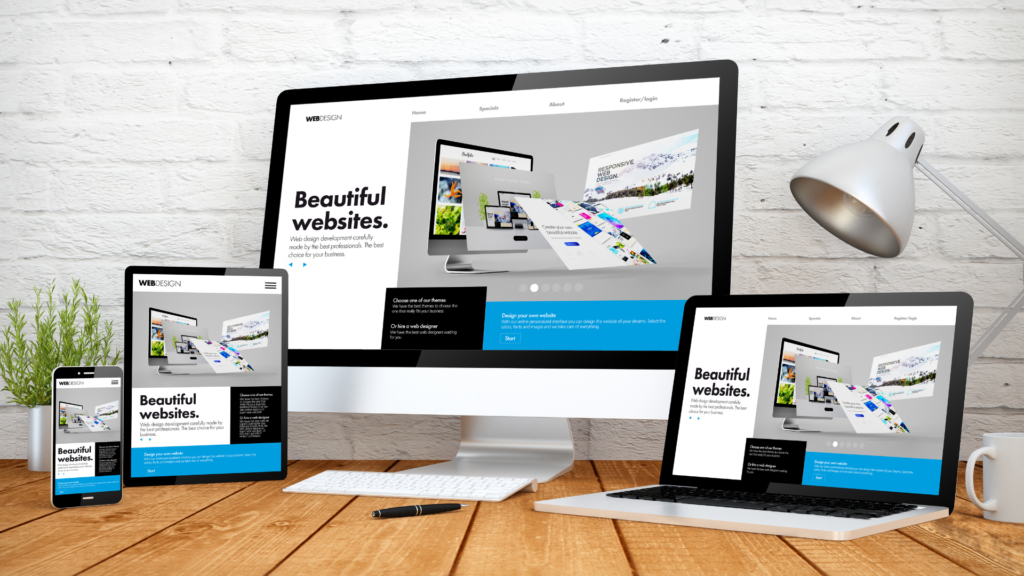Website Design Ideas for Business
Here’s some website design ideas for business. In today’s digital age, having a strong online presence is crucial for businesses of all sizes. A well-designed website not only helps in attracting more visitors but also plays a significant role in converting these visitors into customers. Thus, finding the right website design ideas for business is essential to stand out in a competitive market. This article explores various website design ideas tailored for businesses, aiming to enhance functionality, improve user experience, and ultimately drive growth.

Website Design Ideas for Business
1. Minimalist Design
A minimalist design focuses on simplicity and the use of minimal elements. This approach can make your website look professional, clean, and easy to navigate. By reducing clutter and focusing on essential content, businesses can ensure that their message is communicated effectively. Key features of minimalist design include ample white space, concise content, and a focus on high-quality images.
2. Responsive Design
With the increasing use of smartphones and tablets, having a responsive website design is no longer optional. A responsive design ensures that your website looks and functions well on all devices, providing a seamless user experience. This adaptability can significantly improve engagement rates and help retain visitors, irrespective of the device they are using.
3. Interactive Elements
Incorporating interactive elements into your website design can significantly enhance user engagement. Interactive features such as quizzes, polls, and interactive infographics can keep visitors engaged and encourage them to spend more time on your site. Additionally, these elements can provide valuable insights into your audience’s preferences and behavior.
4. Bold and Vibrant Colors
Using bold and vibrant colors can make your website stand out and convey your brand’s personality. However, it’s important to use colors strategically to ensure they don’t overwhelm visitors. The right color scheme can evoke specific emotions and actions from your audience, making your website more memorable.
5. Custom Illustrations and Animations
Custom illustrations and animations can add a unique touch to your website, making it stand out from competitors. They can be used to explain complex information in an engaging way or to add a playful element to your site. When used appropriately, these visuals can significantly enhance the user experience.
6. High-Quality Visual Content
High-quality images and videos are essential for engaging visitors and conveying your message effectively. Using professional photos or videos of your products, services, or team can build trust and credibility with your audience. Additionally, incorporating visual storytelling can make your website more engaging and memorable.
7. Easy Navigation
Easy navigation is crucial for ensuring that visitors can find what they’re looking for without frustration. A well-organized menu, clear call-to-action (CTA) buttons, and a simple layout can improve the overall user experience. Incorporating a search bar and breadcrumb navigation can also help users navigate your site more efficiently.
8. Content-Centric Design
Content is king, and designing your website with content as the focal point can ensure that your message is received loud and clear. Using typography effectively, breaking text into digestible chunks, and incorporating relevant visuals can make your content more engaging. A content-centric design prioritizes the delivery of valuable information to your audience.
9. Mobile-First Design
A mobile-first design approach prioritizes the mobile experience during the design process. Given that a significant portion of web traffic comes from mobile devices, designing for mobile first can ensure a better user experience for the majority of your visitors. This approach involves designing for smaller screens and touch interactions before making adjustments for larger screens.
10. Sustainability and Accessibility
Sustainability in web design focuses on creating websites that are efficient, use less energy, and are designed with eco-friendly practices in mind. Meanwhile, accessibility ensures that your website is usable by people with disabilities, including those who use screen readers or navigate using keyboard shortcuts. Implementing these principles can widen your audience and contribute to a more inclusive and responsible online presence.

Conclusion
When it comes to website design ideas for business, there’s no one-size-fits-all solution. The key is to understand your audience, your brand’s values, and your specific business needs. By incorporating one or more of these design ideas, businesses can create a website that not only looks great but also performs well in terms of user engagement and conversion rates. Remember, the goal of your website design should always be to enhance the user experience while effectively communicating your brand’s message. Keep testing and iterating based on user feedback and analytics to ensure your website remains effective and relevant.